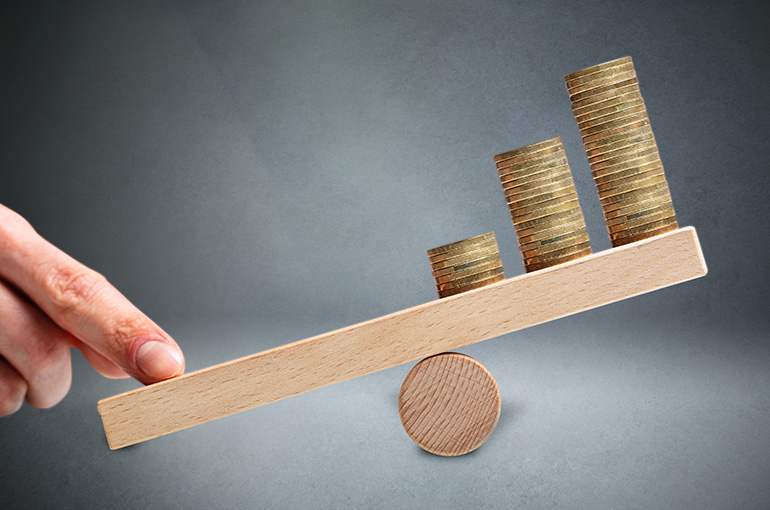 China’s Macro Leverage Ratio Rose to Alarming 295.6% in Second Quarter, Think Tank Says
China’s Macro Leverage Ratio Rose to Alarming 295.6% in Second Quarter, Think Tank Says(Yicai) July 25 -- China’s macro leverage ratio widened to 295.6 percent in the second quarter, up from 294.8 percent a quarter earlier and higher than other major economies, despite the limited willingness of residents and non-financial firms to borrow money as economic growth slows, according to a think tank.
In the first half, the ratio, a gauge of total debt to nominal gross domestic product, expanded by 7.5 percentage points from the end of last year, according to the latest data from the National Institution for Finance and Development under the Chinese Academy of Social Sciences. In the first quarter, the ratio had jumped as much as 6.8 percentage points.
In the three months ended June, the leverage ratio continued to rise, despite the low rate of debt growth, mainly because China's nominal GDP climbed at a slower pace, Liu Lei, secretary-general of a center at the NIFD, told Yicai.
If the nominal GDP growth rate hovers around 4 percent to 5 percent in the long term, the debt growth rate of the real economy would need to slow to around 5 percent in order to keep the macro leverage ratio stable, but this is not easy to achieve, according to the report.
Therefore, China’s macro leverage ratio is expected to grow by about 10 percentage points this year despite slower growth in total debt. Still, the growth rate of the ratio should be lower than last year's 13.5-point gain, according to the report.
The nation's real GDP growth tallied 4.7 percent but because inflation was modest, the nominal GDP rose slower than the real GDP, and this trend continued for the fifth straight quarter in the three months ended June.
High-Debt Nation
The report warns that China’s macro leverage ratio has exceeded that of major global economies, partly because most of these countries have gone through a deleveraging cycle since 2021, with such ratios declining in both private and public sectors. In addition, compared with the high inflation of advanced economies in the past few years, China’s prices have stayed low after the Covid-19 pandemic, suppressing nominal GDP growth, which is driving a passive increase in leverage.
Therefore, getting back to a higher inflation zone would improve business confidence and drive economic growth. It could also ease the rise in leverage, thereby reducing financial risks, the report suggested.
China could expand domestic demand while gently increased inflation could help drive nominal GDP growth, Ming Ming, deputy director of Citic Securities Research Institute, said to Yicai.
For example, it could enhance employment, and narrow the gap between the poor and the rich in order to improve residents’ consumption capability and willingness. It could also execute policies that promote the transformation and upgrading of the manufacturing industry, which should result in more effective demand, Ming added.
Editors: Tang Shihua, Emmi Laine